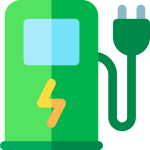The Albanese government’s push to decarbonise road transport has reached a new inflection point. Climate Change and Energy Minister Chris Bowen has told journalists the number of electric vehicles (EVs) on Australian roads is “about to explode”, pointing to a combination of regulatory pressure, targeted investment in charging infrastructure and shifting manufacturer strategies.
What’s changed
At the centre of the shift is the federal government’s new vehicle efficiency standard – often referred to in public debate as the New Vehicle Efficiency Standard (NVES). The policy requires importers and manufacturers to meet fleet-average emissions targets and exposes those who don’t to financial penalties. Bowen and other ministers argue that this “stick” is now driving an industry-wide response: pricing and availability of traditionally high-emissions petrol V8 models have shifted, and many manufacturers are accelerating EV rollouts to avoid fines and satisfy the new standard.
Alongside regulation, the government has steered funds towards infrastructure. As part of a broader $8 billion climate and emissions package, Canberra committed $40 million specifically to kerbside EV charging to reduce so‑called “range anxiety” for drivers who do not have private off-street parking. The minister has emphasised that this federal spend complements state programs, private-sector investment and energy sector activity already underway.
Market signals and manufacturer moves
The impact is visible in dealer showrooms. Global and local brands – from long-standing players that have been cautious on EVs to new entrants – are expanding their electric line-ups. New marquees such as Zeekr, Deepal and XPeng have entered or expanded in Australia, giving buyers fresh choice at a range of price points. Mainstream manufacturers are also responding: Ford’s best-selling Ranger now offers hybrid powertrain options, and major manufacturers including Toyota have signalled broader electrification of larger models.
The NVES has had immediate commercial effects. Sales and stock decisions have pushed prices on some high-consumption models and reduced availability of certain V8 variants, while prompting showrooms to prioritise battery-electric vehicles. According to the most recent car sales data for August, overall new-vehicle sales rose roughly 3 per cent year-on-year to surpass 100,000 units – with a large share of that growth coming from the EV segment. Tesla’s refreshed Model Y, for example, saw a marked lift in sales year-on-year.
Beyond new vehicles: second-hand market and technology trends
The EV transition is not limited to new-car showrooms. The used-car market is following suit, with more pre-owned EVs entering classifieds and auction yards as early adopters upgrade. That is critical for widening EV access: affordable second-hand electric cars will be a major driver of mainstream adoption over the next few years.
On the technology front, improvements in battery density and manufacturing scale continue to push down effective costs and lengthen driving range. Faster-charging networks are rolling out, and vehicle ranges of 400-600 kilometres are increasingly common among mid‑priced models, addressing a key consumer concern.
Infrastructure and consumer confidence
Government and industry messaging has shifted from incentives alone to a two‑pronged approach: make charging accessible and make low-emission vehicles plentiful and affordable. The $40 million kerbside charging program targets urban drivers who rely on street parking, while larger private and public charging projects aim to fill interurban corridors and suburban hubs.
The goal is to remove charging as a barrier to purchase decisions. Bowen has argued that when prospective buyers know they will have reliable access to chargers, they can choose cars based on fit and value rather than range worry.
Policy risks and industry challenges
Despite momentum, challenges remain. The NVES imposes compliance costs on importers that can be passed to consumers, particularly for low-volume specialists. Supply-chain constraints – from semiconductor shortages to battery supply and shipping – can delay model launches and complicate pricing. State policy fragmentation on incentives and registration charges also affects buyer choices: incentives that exist in one state but not another can distort demand and slow a nationally consistent transition.
There are also distributional concerns: ensuring regional Australia and renters benefit from electrification requires deliberate planning and investment, particularly for rural fast-charging networks and kerbside or apartment charging solutions.
What to expect next
Over the next 12 months Bowen expects a significant jump in model availability and showroom presence of EVs as importers adapt to the NVES timetable. That aligns with broader global trends: manufacturers are committing more capital to EV platforms, and new, competitively priced battery models are entering markets worldwide. For Australian buyers this should mean more choice, improving second‑hand supply and a steady expansion of local charging infrastructure.
Conclusion
The federal government’s combination of regulatory pressure through the New Vehicle Efficiency Standard and targeted infrastructure spending is reshaping the Australian car market. Manufacturers are responding by bringing more EVs to showrooms, while investments in kerbside and corridor charging aim to address consumer concerns about range and access. The transition will not be frictionless – supply-chain constraints, state policy differences and the need to service regional and rental markets remain real challenges – but the indicators suggest the pace of change in Australia’s vehicle fleet is accelerating. For drivers and businesses alike, the next 12-24 months are likely to bring a notably broader selection of electrified vehicles and improved charging options.
FAQs
What is the New Vehicle Efficiency Standard (NVES) and how does it affect buyers?
The NVES sets fleet-average emissions targets for importers and manufacturers. It primarily affects companies by imposing penalties for non-compliance, prompting them to bring more low- and zero-emission models to market. For buyers, the effect is greater model choice and potentially faster rollout of EVs; however, it can also influence pricing for certain petrol-powered models.
Will the $40 million kerbside charging program be enough to stop range anxiety?
The $40 million kerbside commitment is targeted – it helps urban drivers without off‑street parking. It is a meaningful step but not a complete solution on its own. A comprehensive, reliable charging network requires coordinated investment from federal and state governments, councils, private operators and energy companies.
Are EVs actually cheaper than petrol cars in Australia now?
Total cost of ownership for EVs can be lower over their lifecycle because of lower fuel and maintenance costs, but upfront prices vary. Government policies, private offers, leasing, depreciation in the second‑hand market and electricity pricing all affect the comparison. As more models arrive and second-hand supply grows, upfront cost differences are expected to narrow.
How will regional and rural Australia be served by charging infrastructure?
State and federal governments and private operators are expanding fast-charging corridors along major routes, and targeted rural charging grants exist or are being developed. Nevertheless, building an equitable network across Australia’s vast distances remains a logistical and funding challenge that will require ongoing coordination.
Should I wait to buy an EV or buy now?
That depends on your circumstances. If a current EV meets your needs, buying now can deliver immediate running-cost savings and access to growing infrastructure. If you want the latest range or prices to fall further, waiting a year or two may bring additional choices and lower entry prices. Consider your daily driving patterns, access to charging and resale expectations.
About EV Evolution
EV Evolution is the leading online platform dedicated to Australian electric vehicle owners and enthusiasts. We foster a vibrant community, delivering essential EV news and insights, and enhancing user engagement through our innovative, AI-powered chatbot for dynamic discussions. Our mission is to empower Australian electric vehicle owners and enthusiasts by fostering a vibrant, AI-driven online community that connects, informs, and advances the nation’s electric vehicle landscape.




